Sourcing top talent is crucial for organisational success. However, many companies struggle in this area. The aftermath of the pandemic has caused the workforce landscape to shift drastically, with a significant portion of employees leaving and not returning on their own. To tackle this, employers must take proactive steps to attract and engage these talented individuals. Our blog offers a guide to creating a proven framework and strategy for hiring success. Here’s how to start.
Introduction
In today’s highly competitive job market, organisations must effectively identify and hire the right talent for success. Conventional hiring methods often struggle to accurately assess candidates’ skills, abilities, and cultural fit.

That’s where talent assessments prove invaluable. These systematic approaches enable organisations to evaluate candidates’ potential, competencies, and suitability for specific roles. This is supported by an SHRM report where,
Careful talent assessment can result in a significant increase in productivity, cost savings, and decreased attrition.
What are Talent Assessments and Why are They Useful?
Talent assessments are tools used to evaluate candidates’ potential, competencies, and suitability for specific roles within an organisation. Unlike traditional hiring methods, talent assessments provide a more objective and data-driven approach to evaluating candidates. These tools can include a variety of assessment methods, such as:
- Cognitive tests
- Behavioural interviews
- Job simulations
- Personality assessments
Talent assessments are useful for several reasons:
- Provide a standardised and structured approach to evaluating candidates, which reduces the influence of personal biases and subjective judgments.
- Offer insights into candidates’ abilities and potential beyond resumes and interviews, which helps organisations make better decisions about hiring, promotion, and talent development.
- Identify candidates who are the best fit for specific roles and organisational culture, leading to improved job satisfaction and retention rates.
The Elements of an Effective Talent Assessment Strategy
Creating an assessment strategy is essential for optimising performance. However, developing one that aligns with your organisation’s culture and mission can be challenging. This section covers the key elements involved in crafting a well-planned talent assessment strategy.
Clear Objectives
Setting clear objectives can help to define the purpose of the assessment and guide the entire process. They should be aligned with your organisation’s overall goals and talent management strategy. They also help in identifying the key competencies and skills required for success in a specific role, determining the outcomes expected from the assessment, and ensuring the assessment methods and tools are designed accordingly.
Job Analysis
A detailed examination of the requirements of a job can help you understand the knowledge, skills, abilities, and other characteristics for effective job performance. Job analysis also informs the development of assessment criteria and ensures that the assessments accurately reflect and measure the relevant competencies and qualities required for success in the job role.
Assessment Methods
Choosing the appropriate techniques and approaches helps to evaluate a candidate’s suitability for a specific job. Different assessment methods can be employed, such as:
- Interviews
- Tests
- Work samples
- Simulations
- Assessment centres
- Behavioural observations
The selection of methods should be based on the job requirements, the desired outcomes, and the resources available. You can use a combination of methods to gather comprehensive and reliable information about a candidate’s competencies.
Assessment Tools and Resources
These are the materials and technologies used for talent assessments, such as interview guides, tests, simulations, and assessment software. Factors like validity, reliability, accessibility, ease of use, and cost-effectiveness should be considered when doing the tool selection. Organisations can develop their own tools or use validated commercially available assessments for the relevant population and job roles.
Valid and Reliable Assessments
A valid and reliable assessment is important for making accurate and fair evaluations. Validity refers to the extent to which an assessment measures what it intends to measure. Reliability, on the other hand, refers to the stability and consistency of assessment results over time and across different assessors. Reliable assessments provide consistent results and minimise measurement errors.
Data Analysis and Interpretation
This process involves the systematic examination of assessment results to draw meaningful conclusions about a candidate’s potential. Statistical techniques may be used to evaluate individual and group performance, identify patterns, compare results against benchmarks, and generate actionable insights. This can help in making informed decisions about candidate selection, development opportunities, and talent management strategies.
Measure Progress and Improvement
An effective talent assessment strategy should not be limited to the initial selection process. It should also incorporate mechanisms to measure progress and improvement over time. Monitoring progress enables organisations to identify strengths and areas for improvement, provide targeted feedback and coaching, and align development initiatives with the assessed competencies.
How can talent assessments provide valuable insights to enhance your talent decision-making? Our blog presents an extensive list of the top 25 talent assessment tools, the benefits and best practices while guiding you on selecting the most suitable one for your employee assessment requirements.
How Do I Design a Comprehensive Talent Assessment Framework?

Designing a talent assessment framework involves the following steps:
- Identify job requirements
- Define your selection criteria
- Choose assessment methods
- Choose assessment tools
- Pilot testing
- Implement and iterate
Let us walk you through each step in depth:
Identify Job Requirements
The first step in designing a talent assessment framework is to clearly identify and understand the job requirements. This information forms the basis for developing relevant assessment criteria and selecting appropriate assessment methods.
For example, conducting a thorough job analysis may involve:
- Interviews with subject matter experts
- Reviewing job descriptions
- Analysing existing high-performing employees
- Considering industry standards
Define Your Selection Criteria
Defining the selection criteria for a specific role is undeniably a critical aspect in your talent assessment framework. The selection criteria encompass various elements, starting with:
- Clear and detailed role description to outline key responsibilities and expectations of the role.
- Desired skills, abilities, and knowledge are necessary for the role’s success.
- Essential qualifications and desirable attributes are needed when developing selection criteria.
In doing so, you create a clear benchmark against which candidates are evaluated during the assessment process. This ensures the focus remains on the most critical attributes and qualifications that align with the role and your company goals.
Choose Assessment Methods
The next stage will determine how you assess your shortlisted candidates. This requires revisiting your overall recruitment strategy, aligning it with the company’s goals, missions, and specific needs. Consider factors such as:
- Skills gaps
- Existing strengths and weaknesses
- Budget and time constraints
Alternatively, you may choose to conduct hiring assessments in person using internal resources to ensure fairness and eliminate the possibility of someone else taking the test on the candidate’s behalf.
Choose Assessment Tools
Assessment tools are the instruments used within the chosen assessment methods. For instance, if you conduct interviews, the tools could include structured interview guides or behaviour-based interview questions. If you opt for tests, the tools could be online assessment platforms or specific software. Consider factors such as validity, reliability, ease of use, and the ability to measure the desired attributes accurately.
Pilot Testing
A pilot test involves administering the assessments to a small sample of candidates who represent the target population. This allows you to evaluate the effectiveness of the framework, identify any issues or biases, and make necessary adjustments. Pilot testing helps in fine-tuning the assessment process, thus ensuring fairness and reliability, and enhancing the predictive validity of the assessments.
Implement and Iterate
Once the talent assessment framework has been pilot tested and refined, it is implemented by assessors who administer assessments to all candidates. The data collected is then used to evaluate and compare candidates. Feedback collected from assessors and candidates and continuous monitoring and evaluation of the framework are essential. Iteration based on real-world data and insights allow for necessary improvements.
How Do Talent Assessments Work?
Talent assessments play a crucial role in helping employers prioritise candidates for interviews and make informed hiring decisions. Leveraging a talent assessment platform provides HR teams and hiring managers with a comprehensive solution to effectively screen candidates from a large applicant pool at an early stage.
These online assessments can be administered via a robust cloud-based platform, fortified with advanced technology to ensure security. This can help you automate your entire recruitment process by seamlessly integrating various talent assessment tools, such as:
- Behavioural assessments
- Coding assessments
- Cognitive assessments
- Personality assessments
- Technical assessments
Now let us look at how the assessment platform facilitates the talent evaluation process, from test creation to result analysis:
- Assessment creation:
- Design assessments by selecting questions from a repository or assessment library.
- Tailor tests to specific parameters like duration, question order, and scoring logic.
- Assessment invitation:
- Candidates receive invites scheduled for specific times, dates, or IP addresses.
- An access link is provided to the candidates to begin the assessment.
- Supervisory interventions:
- Implement supervisory interventions to ensure assessment integrity and credibility.
- Deploy supervisors from your organisation or use third-party services.
- Candidate verification:
- Verify candidates’ identities using webcams and government-issued identity cards.
- Perform diagnostic checks on their computers and scan testing environments.
- Utilise online supervisory features to prevent cheating.
- Instant report generation:
- Generate automated and comprehensive reports with key data points.
- Reports are customised to present actionable and relevant information.
- Reports are promptly delivered to the test administrator.
Best Practices for Conducting Talent Assessments
To ensure the effectiveness and fairness of talent assessments, it is important to follow best practices, including:
Standardisation
Maintaining a standardised approach is crucial to ensure fairness and reliability in talent assessments. This involves establishing consistent administration and scoring procedures for all candidates. Clear guidelines should be provided to assessors, including instructions on how to administer assessments, the criteria for talent evaluation, and the scoring methodology.
Doing this can help to minimise the variations in the assessment outcomes and ensure that candidates are evaluated based on their skills and qualifications rather than the preferences or biases of individual assessors.
Train Assessors
Assessors play a critical role in talent assessments, and it’s essential to provide them with proper training and calibration. Training programs should:
- Familiarise assessors with the assessment criteria, scoring methods, and the overall evaluation process.
- Equip assessors with the necessary skills and knowledge to accurately evaluate candidates.
Regular calibration sessions should also be conducted to align assessors’ judgments and reduce subjective biases. These sessions involve:
- Discussing sample assessments
- Resolving discrepancies
- Reaching a consensus on evaluation standards
Thereby, enhancing the reliability and consistency of the assessments.
Use Multiple Assessment Methods
Relying on a single assessment method may not provide a comprehensive understanding of a candidate’s capabilities. Using multiple assessment methods can help you gather a broader range of data points about your candidates. This helps in obtaining a more accurate and holistic assessment of their skills, competencies, and potential fit within your organisation. Using multiple methods also helps in reducing biases and increasing the validity of talent assessments.
Candidate Feedback
Offering constructive feedback to candidates is a valuable practice regardless of the assessment outcome. Providing feedback:
- Allows candidates to understand their strengths and areas for development
- Enables them to improve their performance in future opportunities
- Demonstrates respect for candidates’ efforts and contributes to a positive candidate experience
However, it is important to deliver feedback in a timely manner. This ensures clarity, specificity, and actionable suggestions that can guide candidates in their professional growth and development.
Continuous Improvement
Talent assessment processes should be subject to regular review and refinement to enhance their effectiveness. This involves:
- Analysing employee assessment data
- Gathering feedback from assessors and candidates
- Making necessary adjustments to optimise the assessment strategy over time
Assessing the validity and reliability of different assessment methods can help identify areas for improvement. Monitoring key performance indicators, such as the quality of hires and their subsequent performance, can provide valuable insights into the effectiveness of the assessments.
Regularly updating and improving the talent assessment method ensures that it remains aligned with your organisational needs and the industry’s best practices.
Create a Foundation of Support
Establishing a supportive environment throughout the talent assessment process is essential to foster a positive candidate experience. This includes:
- Giving clear communication about the process, including the purpose, expectations, and timeline.
- Being responsive to candidates’ inquiries and concerns in a timely and accurate manner.
- Demonstrating respect and valuing candidates’ contributions to create a positive impression of the organisation.
A supportive environment encourages candidates to perform at their best and fosters a positive employer brand, which can attract top talent in the future.
Key Takeaways
After exploring the importance, benefits, and elements of talent assessments in the hiring process and strategy, here are the following key takeaways from the blog:
- Talent assessments provide value and benefits in the hiring process by offering:
- Standardised and structured evaluation
- Deeper insights into candidates’ potential, competencies, and fit for specific roles
- Contributing to improved job satisfaction and retention rates
- Effective talent management requires:
- A clear strategy with well-defined objectives
- Appropriate assessment methods that accurately evaluate candidates’ role suitability
- Valid and reliable assessments for fair evaluations
- Data analysis for informed decision-making
- Continuous refinement to adapt to changing needs and make progress
- The best practices for conducting talent assessments effectively involves:
- Standardisation for consistency
- Assessor training and calibration to minimise bias
- Using multiple assessment methods for a comprehensive evaluation
- Providing candidate feedback for their development
- Continuous improvement of the assessment process
- Promoting a supportive setting to enhance the candidate experience and employer brand
Frequently Asked Questions (FAQs)
What is talent assessment framework?
A talent assessment framework is a structured approach used to evaluate an individual’s skills, abilities, and potential in a systematic manner, enabling organisations to make informed decisions in areas like hiring, development, and succession planning.
What is an example of a talent assessment?
An example of a talent assessment is the Hogan Assessment Suite, which includes personality assessments that measure various aspects such as leadership potential, emotional intelligence, and work style preferences.
What are the three components for conducting a talent assessment?
The three components for conducting a talent assessment typically include:
- Defining the desired competencies and attributes for the role or purpose.
- Implementing assessment methods like interviews, psychometric tests, and simulations.
- Evaluating and analysing assessment results to make informed decisions.
What is a talent assessment platform?
A talent assessment platform, such as Accendo’s TalentPulse, is a digital tool or software that facilitates the administration, scoring, and analysis of talent assessments. It streamlines the assessment process and provides actionable insights for decision-making.
What is a talent assessment marketplace and its unique selling proposition (USP)?
A talent assessment marketplace is an online platform that offers a wide range of talent assessment products and services from multiple vendors. Its USP lies in providing a centralized hub for organisations to access diverse assessments, compare options, and choose the most suitable solutions for their specific needs.
What is the difference between talent assessments and a talent assessment marketplace?
Talent assessments are evaluations of individuals’ skills and potential, while a talent assessment marketplace is an online platform that offers a wide variety of assessments from different providers. It provides organisations with convenient access to a range of assessment options in a single location, serving as a comprehensive sourcing platform.
Page Contents






